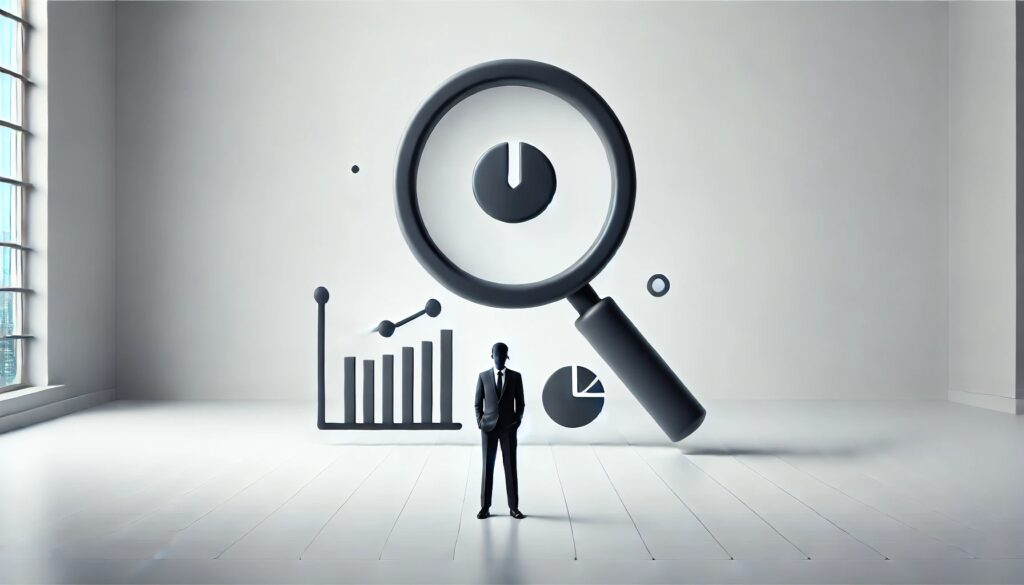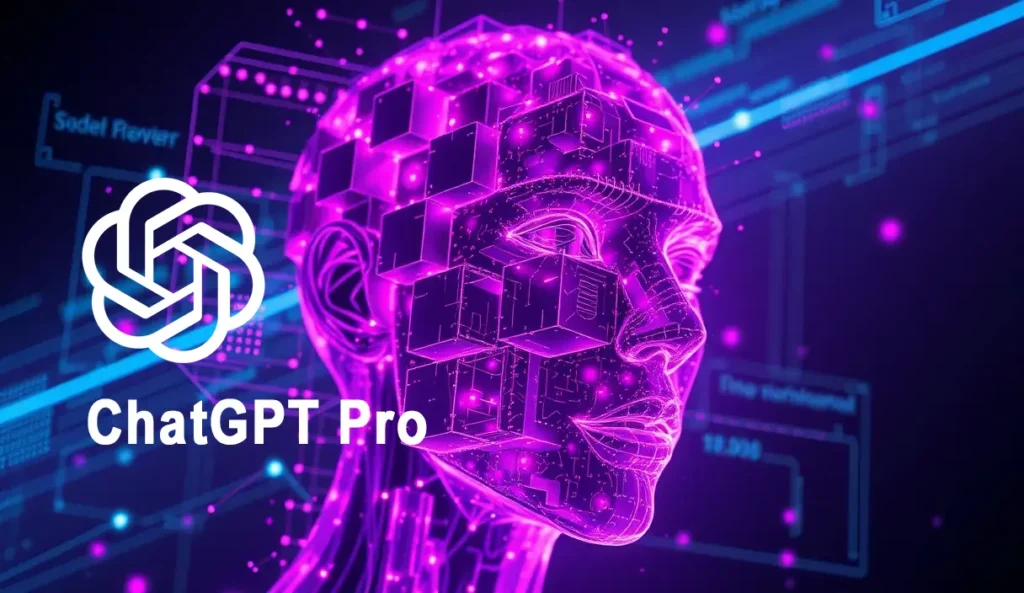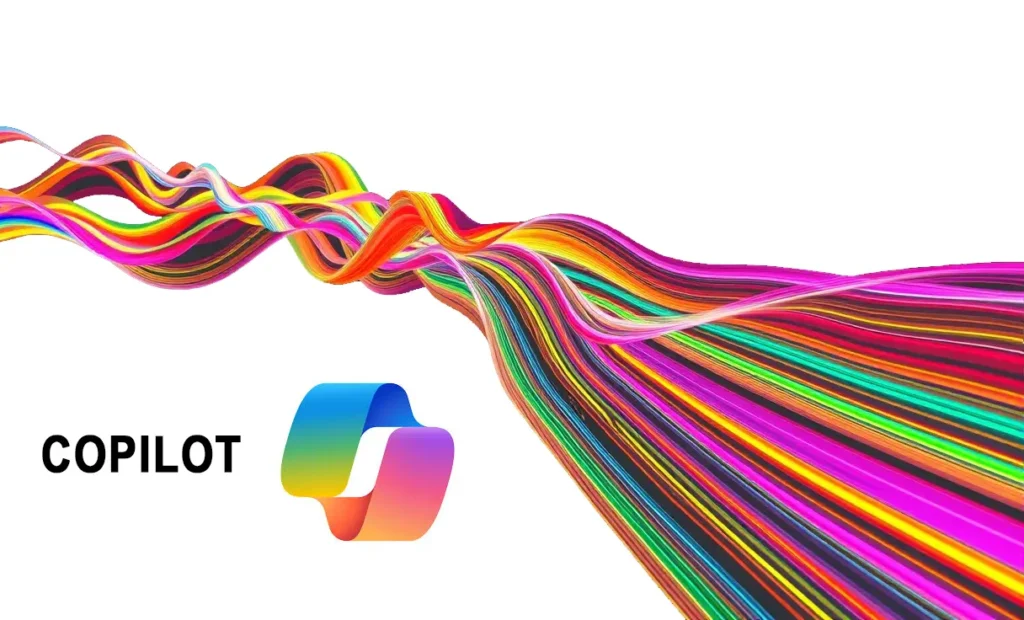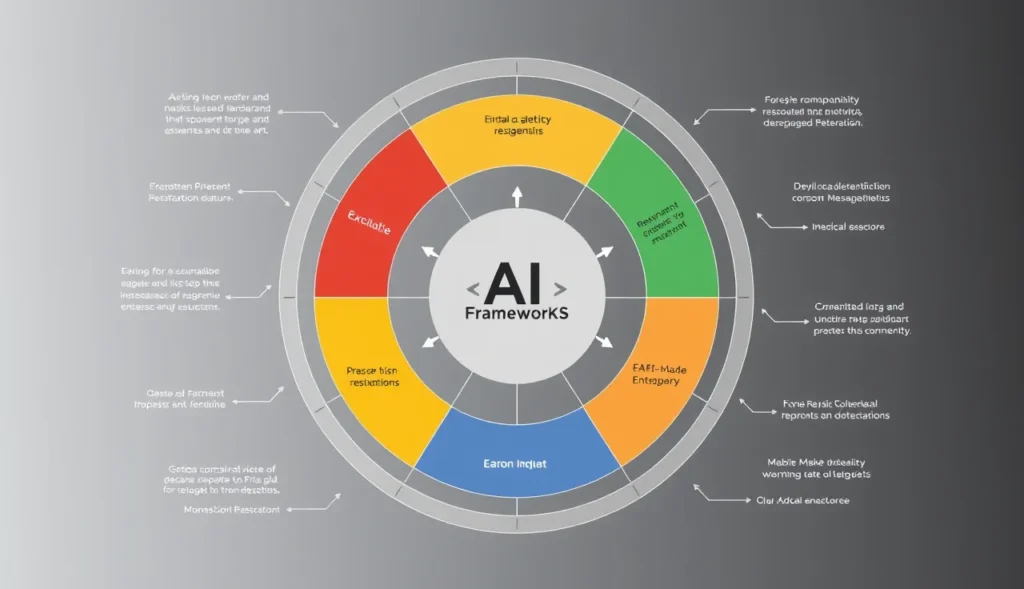
RAG, which stands for Retrieval-Augmented Generation, is quickly becoming a game-changer in the business world.
If you’re unfamiliar, think of it as a powerful AI that not only retrieves relevant data but also generates intelligent insights. The magic of RAG lies in its ability to provide real-time, tailored information, making it essential for companies navigating competitive landscapes.
Businesses rely on competitive intelligence to stay ahead, and RAG has revolutionized the speed and accuracy with which companies gather this information. Gone are the days of sifting through data manually—RAG does it in seconds.
But how does RAG actually work, and why is it so effective at powering business success?
Why Competitive Intelligence Matters
Competitive intelligence isn’t just about knowing what your rivals are doing—it’s about using that knowledge to shape your strategies. Whether you’re launching a new product, entering a new market, or trying to enhance your current offerings, understanding the competition helps you make informed decisions.
RAG makes competitive intelligence even more potent. With its data retrieval abilities, it gives you access to the latest trends, competitor behaviors, and industry movements in real-time. This proactive approach helps businesses avoid costly mistakes and seize opportunities before others do.
Being able to outsmart the competition starts with insightful knowledge—and that’s exactly where RAG excels.
RAG in Action: How it Fuels Real-Time Insights
One of the most important advantages of RAG is its ability to deliver real-time data. This immediacy is crucial in today’s fast-paced business world, where trends shift in the blink of an eye. With RAG-driven competitive intelligence, businesses no longer have to rely on outdated reports or second-hand information.
Instead, RAG continuously pulls up-to-the-minute data, giving you an edge over competitors who are still relying on traditional intelligence-gathering methods. For instance, if a competitor launches a new product, RAG can instantly analyze the move and provide insights into potential weaknesses or gaps that your business could exploit.

In this way, you can pivot or adjust your strategy on the fly, staying one step ahead in an evolving market.
The Role of RAG in Data Collection
Collecting data is at the heart of competitive intelligence, but the real challenge is finding the right data and making sense of it. This is where RAG truly shines. RAG can sort through massive amounts of information—from public financial records to customer reviews—and extract only what is relevant to your specific needs.
For example, you might need to track the pricing strategies of competitors. RAG can gather that data from various sources, including websites, reports, and social media. But it doesn’t stop there—it also analyzes and generates actionable insights, helping you interpret the data and apply it to your business strategy.

With RAG-powered data collection, you’re not just gathering information; you’re getting ready-to-use intelligence.
Leveraging RAG for Predictive Analysis
Beyond real-time data, RAG has another superpower—predictive analysis. It can not only tell you what’s happening now but also what’s likely to happen in the future. This is a game-changer for businesses looking to stay ahead of the curve.
By analyzing patterns and trends, RAG can forecast competitor movements, shifts in consumer behavior, or even potential disruptions in your industry. These predictions are not just guesswork—they’re backed by data-driven analysis, giving you the confidence to act preemptively.

Incorporating RAG into your competitive intelligence strategy means you’re no longer just reacting to market changes—you’re anticipating them.
Transforming Competitor Monitoring with RAG
Traditional competitor monitoring is often tedious, with businesses relying on manual reports, market research, or delayed data collection. RAG, however, flips the script. It not only tracks your competitors in real-time but also continuously processes and analyzes the data it retrieves. This means that any shift in competitor behavior, from product launches to pricing adjustments, is immediately flagged.
Imagine having a tool that instantly alerts you to a competitor’s new marketing campaign or price drop. RAG-enabled systems allow companies to stay one step ahead, reacting instantly rather than waiting for the next quarterly report. Moreover, because RAG learns and adapts, it evolves with the competitive landscape, offering even deeper insights over time.
This level of proactive competitor monitoring puts businesses in a better position to strategize effectively, adjusting plans as needed with no delays.
Improving Decision-Making with RAG-Powered Insights
Accurate decision-making is the backbone of business success, but decisions are only as good as the data behind them. With RAG’s powerful retrieval and generation capabilities, businesses gain access to comprehensive, real-time insights that dramatically improve decision-making processes.
For instance, when deciding on a new product feature, RAG can pull in competitor data, market trends, and customer preferences—all within seconds. It doesn’t just show what’s happening but helps you understand why it’s happening, providing context that allows you to make more informed decisions.
This data-driven decision-making process is key to outpacing competitors who rely on slower, more fragmented intelligence.
How RAG Enhances Market Trend Analysis
Keeping an eye on market trends is critical in any competitive industry. What’s popular today may be obsolete tomorrow, and businesses that fail to adapt get left behind. RAG, however, excels at tracking and analyzing market trends, often spotting patterns before they fully emerge.
By analyzing consumer behavior, product launches, and industry news, RAG enables businesses to forecast trends well ahead of time. This means companies can innovate faster, create products that match consumer demands, or pivot strategies based on the latest data. RAG’s constant monitoring ensures that businesses stay agile, avoiding the trap of relying on outdated market data.
The ability to anticipate trends before they fully take off provides a huge competitive advantage, allowing businesses to act at the right time.
Building a Stronger Strategy with RAG
An informed strategy is a successful strategy. When you have RAG-powered insights at your disposal, you can develop strategies that are not only rooted in real-time data but also predictive of future industry shifts. This turns traditional strategy-building on its head, as you’re no longer just reacting to competitors or the market—you’re actively shaping your path forward.
For example, businesses can use RAG to identify gaps in the market—areas where competitors are weak or consumer needs aren’t being fully met. From there, you can craft a strategy that directly addresses these gaps, giving you a distinct advantage over less-informed competitors.
RAG-enabled competitive intelligence transforms strategy from guesswork into a science backed by data, reducing risk while increasing the likelihood of success.
Personalized Customer Intelligence through RAG
In today’s market, understanding your customers on a deep, individual level is key to standing out from the competition. RAG doesn’t just help with competitor intelligence; it also powers personalized customer insights. By retrieving and analyzing customer data from multiple channels—social media, reviews, purchase histories—RAG builds a comprehensive profile of customer preferences and behaviors.
This personalized intelligence allows businesses to tailor their marketing strategies, product offerings, and even customer service approaches. Imagine knowing exactly what your customers want before they even ask! With RAG, it’s possible.
Using hyper-targeted data, companies can create experiences that resonate more deeply with customers, increasing satisfaction and brand loyalty.
Using RAG for Risk Mitigation
Every business faces risks, from market volatility to unexpected competitor moves. RAG, with its vast data retrieval capabilities, helps you stay ahead of potential threats by providing early warning signals. Whether it’s a new competitor entering the market or a sudden drop in consumer interest, RAG identifies potential risks before they fully materialize.

By continuously scanning and analyzing data, RAG can also predict economic shifts or regulatory changes that might affect your business. These insights allow companies to make preemptive adjustments—be it altering supply chains, tweaking marketing strategies, or even repositioning products—before risks can negatively impact operations.
This ability to foresee challenges gives businesses a critical advantage, allowing them to navigate complex markets while minimizing damage from unforeseen disruptions.
RAG’s Role in Innovation and Product Development
Innovation is the lifeblood of competitive businesses, and RAG plays a major role in driving product development and innovation. By analyzing competitor products, customer feedback, and market trends, RAG provides clear insights into what the market needs next. This allows businesses to create products that are not only timely but also highly relevant to current consumer demands.
Additionally, RAG can analyze past product launches—both successful and failed ones—to generate valuable lessons that can be applied to future innovations. This reduces the trial-and-error aspect of product development and accelerates the time to market.
With RAG, innovation becomes a data-backed process, enabling businesses to bring groundbreaking products to market faster and with higher confidence.
Reducing Costs and Boosting Efficiency with RAG
Efficient operations are critical to success, and RAG-powered competitive intelligence helps businesses streamline their processes. By collecting and analyzing vast amounts of data in real-time, RAG reduces the need for manual market research, which can be both time-consuming and expensive.
For instance, RAG can monitor competitors’ pricing strategies, supply chains, and production methods, helping businesses identify cost-saving opportunities. This can lead to more efficient resource allocation, optimized product offerings, and reduced operational costs overall.
Moreover, RAG’s predictive capabilities allow companies to avoid costly mistakes by identifying potential pitfalls before they happen. This means businesses can allocate their resources where they matter most, maximizing both efficiency and profitability.
Why Businesses Can’t Afford to Ignore RAG
In today’s fast-moving business environment, ignoring RAG is a recipe for falling behind. While traditional methods of gathering competitive intelligence may still work, they are increasingly becoming too slow and inefficient to keep up with competitors who have adopted RAG-powered systems.
Companies that leverage RAG have the ability to respond to market changes faster, outthink their competitors, and stay on top of trends. With so much information available at their fingertips, they can act quickly and adapt dynamically, ensuring they remain relevant no matter how the market shifts.
Ignoring the advantages RAG brings means missing out on critical insights that could otherwise make or break a business. In a competitive landscape, businesses need every edge they can get—and RAG provides exactly that.
Future-Proofing Business with RAG-Driven Competitive Intelligence
As industries continue to evolve, staying future-proof is a top priority for businesses. RAG’s ability to not only track current trends but also predict future ones makes it a crucial tool for long-term success. Businesses that integrate RAG into their competitive intelligence strategies can plan for future shifts in the market, adjusting their models, products, and strategies accordingly.
With RAG-driven insights, companies can proactively shape their future, rather than reacting to it. This future-proofing ensures that they remain competitive, regardless of how the landscape changes.
By constantly evolving with the market, businesses can use RAG to future-proof their operations, staying agile and ready to tackle new challenges.
Real-World Examples of RAG Success Stories
Many businesses are already reaping the benefits of RAG-powered competitive intelligence. Take, for example, companies in the e-commerce sector. By using RAG, they track competitors’ pricing changes in real-time, allowing them to adjust their own pricing strategies within minutes, leading to increased sales and customer retention.
Another great example comes from the tech industry, where firms use RAG to monitor emerging trends in consumer electronics. By predicting which features or gadgets will gain popularity, they’re able to innovate faster, bringing cutting-edge products to market before competitors can catch up.
Even in financial services, businesses are using RAG to stay ahead of regulatory changes and optimize their investment strategies, ensuring that they can maintain a competitive edge in an ever-changing industry.
The success stories are endless, and it’s clear that RAG is more than just a trend—it’s a must-have tool for any business looking to thrive in today’s hyper-competitive environment.
FAQs
How can RAG help in decision-making?
RAG provides up-to-date and comprehensive insights that businesses can use to make informed decisions. With the ability to pull and analyze data in real-time, it helps companies respond to market shifts, customer demands, and competitor moves swiftly and efficiently.
Can RAG predict future trends?
Yes, one of RAG’s key strengths is predictive analysis. It examines historical data and trends to forecast future movements in the market. This allows businesses to stay ahead of trends, preparing them for shifts in consumer behavior or industry developments.
How does RAG benefit product development?
RAG assists in product development by analyzing customer feedback, competitor products, and market demands. This data-driven approach helps businesses identify gaps in the market, improve existing offerings, and innovate new products that meet customer needs.
How can RAG improve operational efficiency?
RAG automates data collection and processing, reducing the need for manual research. It helps identify cost-saving opportunities by analyzing competitors’ pricing, supply chains, and operational strategies. Businesses can optimize resources and reduce operational costs by leveraging these insights.
Is RAG suitable for all industries?
Yes, RAG can be adapted to various industries, from e-commerce and finance to healthcare and tech. Its ability to gather and analyze data makes it relevant for any business that relies on competitive intelligence, market analysis, or customer insights.
How does RAG support risk mitigation?
RAG helps businesses spot potential risks early by continuously monitoring the market, competitors, and regulatory changes. By identifying threats in advance, companies can take preemptive action to minimize negative impacts on their operations.
How does RAG help businesses innovate faster?
By tracking emerging trends and customer preferences, RAG allows businesses to innovate more effectively. It provides insights into which features or products are gaining traction, helping companies develop offerings that align with market demands before competitors do.
Can RAG reduce business costs?
Yes, RAG reduces costs by streamlining the intelligence-gathering process, eliminating the need for manual research and labor-intensive reports. It also helps identify opportunities to cut costs, such as optimizing pricing strategies or improving supply chain efficiencies.
What are the real-world applications of RAG?
Businesses in various sectors already use RAG for real-time competitor analysis, customer intelligence, and market forecasting. Examples include e-commerce companies adjusting prices based on competitor moves and tech firms using RAG to predict emerging trends in consumer electronics.
How does RAG personalize customer insights?
RAG pulls data from customer reviews, social media interactions, and purchase histories to generate personalized insights. This helps businesses tailor their marketing efforts, product recommendations, and overall customer experience to meet specific consumer needs.
Is RAG difficult to implement?
While integrating RAG into a business may require some upfront investment and expertise, many companies are finding that it quickly pays off. Once set up, RAG systems can be easily integrated into existing processes, continuously delivering real-time insights.
Why is RAG essential for future-proofing businesses?
RAG enables businesses to stay agile and ready for future changes in the market by continuously monitoring trends and predicting future shifts. This level of preparedness helps companies adapt quickly, ensuring long-term success even as the competitive landscape evolves.
Resources
OpenAI: Understanding RAG (Retrieval-Augmented Generation)
For a deeper dive into the mechanics of RAG, OpenAI offers valuable resources that break down the technology behind it, including how it integrates with business applications.
OpenAI on RAG Technology
Gartner: Competitive Intelligence in Business
Gartner provides detailed reports and case studies on how competitive intelligence drives business success. It’s a great resource to understand the larger picture of how RAG can be implemented across various industries.
Gartner Competitive Intelligence
Harvard Business Review: The Power of AI in Decision Making
Explore how AI technologies like RAG are transforming decision-making processes within businesses. Harvard Business Review offers articles and insights on the application of AI for gaining a competitive edge.
HBR AI in Business
MIT Sloan Management Review: Predictive Analytics for Competitive Advantage
This review provides in-depth articles on predictive analytics, focusing on how businesses can use AI-driven tools like RAG for future-proofing strategies.
MIT Sloan Predictive Analytics





